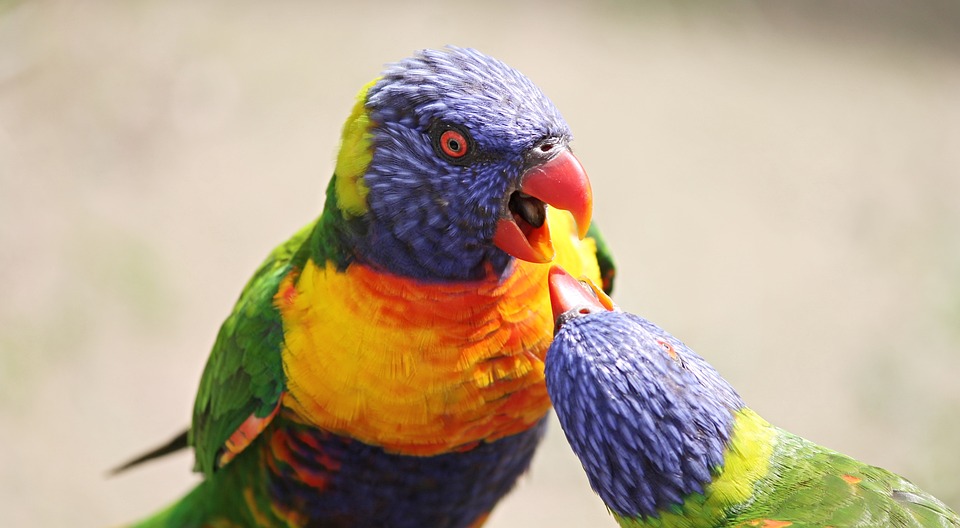Introduction: Understanding Parrot Behavior and the Importance of Texture Exposure
Parrots are intelligent and curious creatures known for their vibrant personalities and ability to mimic human speech. However, just like any other pet, parrots require proper training and socialization to ensure their well-being. One essential aspect of parrot behavior training is introducing them to different textures, which can be achieved effectively through positive reinforcement techniques. In this article, we will delve into the significance of texture exposure for parrots and provide you with valuable tips on how to use positive reinforcement to help your feathered friend embrace various textures.
Why is Texture Exposure Important for Parrots?
1. Mental Stimulation and Enrichment: Introducing parrots to different textures stimulates their minds and provides them with the mental stimulation they need. Exploring new textures engages their senses and keeps them mentally active, preventing boredom and potential behavioral issues.
2. Promoting Physical Health: Texture exposure allows parrots to exercise and strengthen their feet and beaks. Different textures provide varying levels of resistance, helping to keep their muscles and beaks healthy and strong.
3. Developing Trust and Confidence: By introducing parrots to different textures in a positive and rewarding way, you can help them build trust and confidence. When they encounter new textures and realize that there is no threat, they become more comfortable and willing to explore their surroundings.
Positive Reinforcement Techniques for Introducing Parrots to Different Textures
1. Step-by-Step Approach: Gradual Exposure
Start by introducing your parrot to textures that are similar to the ones they are already familiar with. For example, if your parrot is used to smooth surfaces, gradually introduce slightly rougher textures. Gradually increase the variety of textures over time, allowing your parrot to adjust at their own pace.
2. Treat-Based Training: Associating Texture with Reward
Use positive reinforcement in the form of treats to create positive associations with different textures. When your parrot shows interest in a new texture, reward them with a treat. This will help them associate the texture with a positive experience, encouraging further exploration.
3. Desensitization: Overcoming Fear or Anxiety
Some parrots may be afraid or anxious when encountering new textures. In such cases, desensitization techniques can be helpful. Start by placing the new texture at a distance from your parrot and gradually move it closer over time. Pair this process with positive reinforcement to help your parrot overcome their fear or anxiety.
4. Utilizing Toys and Playtime: Interactive Texture Exploration
Incorporate toys with different textures into your parrot’s playtime. Toys such as ropes, wooden blocks, and textured balls can provide opportunities for your parrot to interact with and explore various textures in a fun and playful manner.
Frequently Asked Questions (FAQs)
Q1: When is the best time to start introducing my parrot to different textures?
A1: It is best to start introducing your parrot to different textures as early as possible. Young parrots are more adaptable and open to new experiences.
Q2: How do I know if my parrot is afraid of a particular texture?
A2: Signs of fear may include cowering, vocalizations of distress, or attempts to avoid or escape from the texture. Pay attention to your parrot’s body language and behaviors.
Q3: What if my parrot refuses to interact with a new texture, despite using positive reinforcement techniques?
A3: Be patient and give your parrot time to adjust. Try different textures and approaches, and consult with a professional avian behaviorist if needed.
Q4: Can negative reinforcement be used to introduce parrots to textures?
A4: Negative reinforcement, such as punishment or force, is not recommended when introducing parrots to textures. Positive reinforcement techniques are more effective and promote a trusting and positive relationship.
Q5: Are there any textures that I should avoid introducing to my parrot?
A5: Avoid introducing toxic or dangerous materials that could harm your parrot, such as sharp or rough textures that could cause injuries.
Q6: Can I use clicker training to reinforce positive behavior during texture exposure?
A6: Yes, clicker training can be a helpful tool to reinforce positive behaviors during texture exposure. The sound of the clicker can indicate to your parrot that they have done something right and will be rewarded.
Q7: How long does it usually take for a parrot to become comfortable with a new texture?
A7: The time it takes for a parrot to become comfortable with a new texture can vary. It depends on the individual parrot and their past experiences. Some parrots may adapt quickly, while others may take more time.
Q8: What are some signs that indicate my parrot is enjoying the texture exploration process?
A8: Signs of enjoyment may include vocalizations of excitement, increased curiosity, active exploration, and a relaxed body posture.
Q9: Are there any risks associated with introducing parrots to new textures?
A9: While introducing parrots to new textures is generally safe, always supervise their interactions to ensure they do not ingest or get injured by any materials.
Conclusion: Encouraging Texture Exploration through Positive Reinforcement
By employing positive reinforcement techniques, you can help your parrot become comfortable and confident in encountering different textures. Remember to take a gradual approach, reward their progress, and always prioritize their well-being and comfort. With patience and dedication, you can provide your parrot with a stimulating and enriching environment that supports their overall behavioral development.









